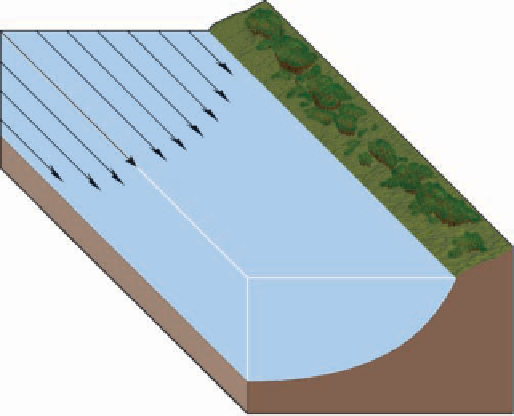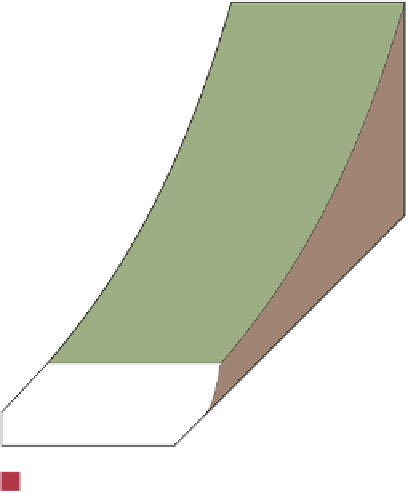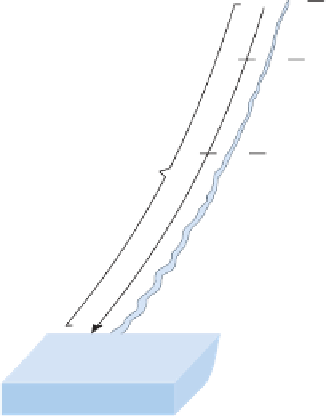Geology Reference
In-Depth Information
◗
Figure 12.5
Gradient and Flow Velocity
1,000 m
Gradient
5 m/km
500 m
Gradient
1.67 m/km
250 m
Gradient
2 m/km
Gradient
1 m/km
The average gradient of this stream is 2 m/km; however,
gradient can be calculated for any segment of a stream, as shown in
this example. Notice that the gradient is steepest in the headwaters
area and decreases in a downstream direction.
The maximum fl ow velocity is near the center and top of a
straight channel where the least friction takes place. The arrows are
proportional to velocity.
a
b
Broad, shallow
channel
Narrow, deep
channel
Semicircular
channel
1 m
10 m
5 m
Radius = 2.5 m
2 m
10 m
2
10 m
2
10 m
2
Cross-sectional
area
Perimeter in contact
with water
12 m
12 m
7.9 m
These three differently shaped channels have the same cross-sectional area; however, the
semicircular one has less water in contact with its perimeter and thus less frictional resistance
to fl ow.
c
Specifically,
discharge
is the volume of water that
passes a particular point in a given period of time. Dis-
charge is found from the dimensions of a water-filled
channel—that is, its cross-sectional area (
A
) and fl ow ve-
locity (
V
). Discharge (
Q
) is then calculated with the for-
mula
Q
=
VA
and is expressed in cubic meters per second
(m
3
/sec) or cubic feet per second (ft
3
/sec). The Mississippi
River has an average discharge of 18,000 m
3
/sec, and the
average discharge for the Amazon River in South America
is 200,000 m
3
/sec.
In most rivers and streams, discharge increases
downstream as more and more water enters a channel. How-
ever, there are a few exceptions. Because of high evaporation
rates and infi ltration, the fl ow in some desert waterways ac-
tually decreases downstream until the water disappears. And
even in perennial rivers and streams, discharge is obviously
highest during times of heavy rainfall and at a minimum
during the dry season.
AND TRANSPORT SEDIMENT?
Streams and rivers possess two kinds of energy to accomplish
their tasks of erosion and transport: potential and kinetic.
Potential energy
is the energy of position, such as the energy
of water at high elevation. During stream fl ow, potential is












Search WWH ::

Custom Search